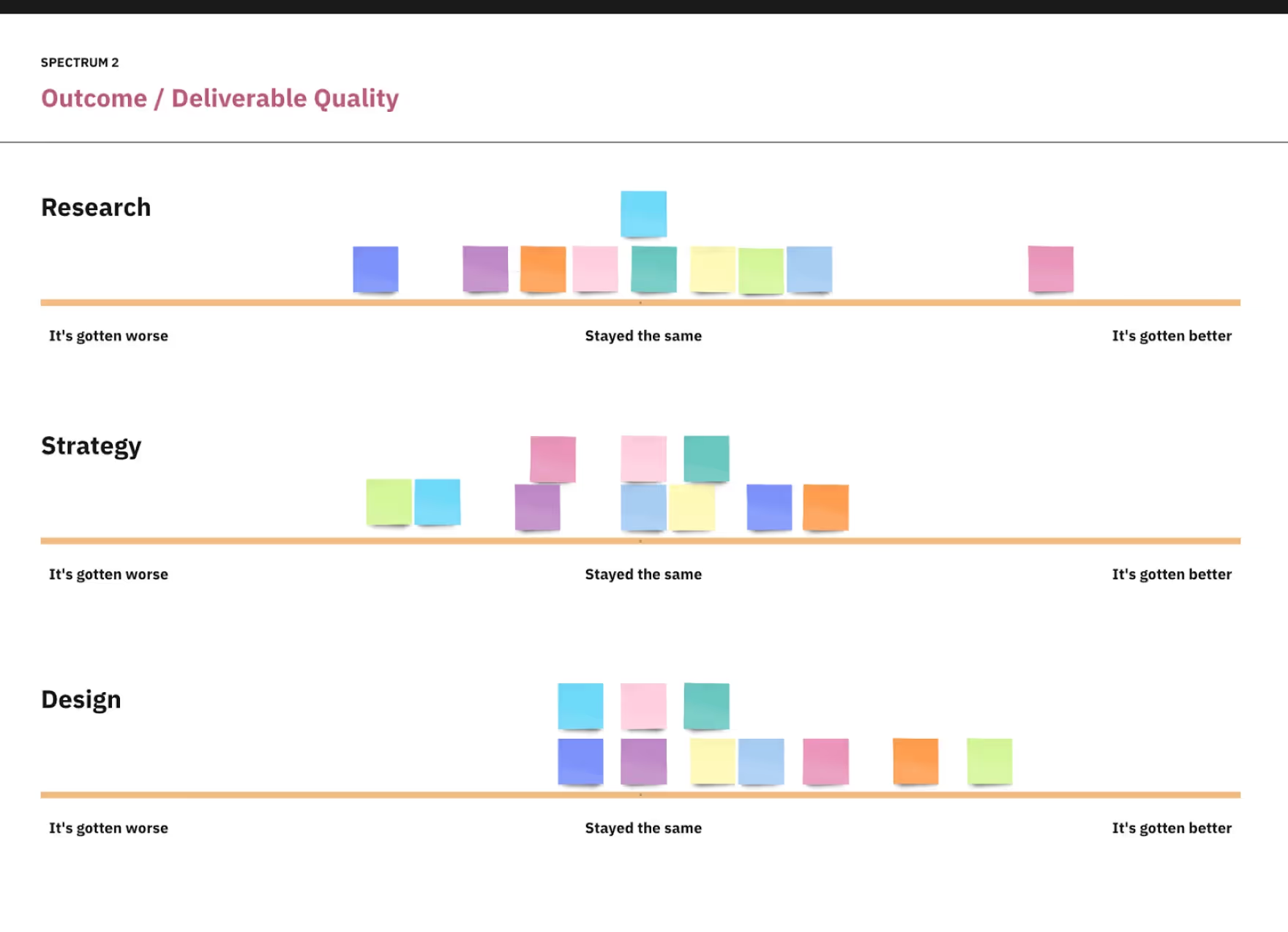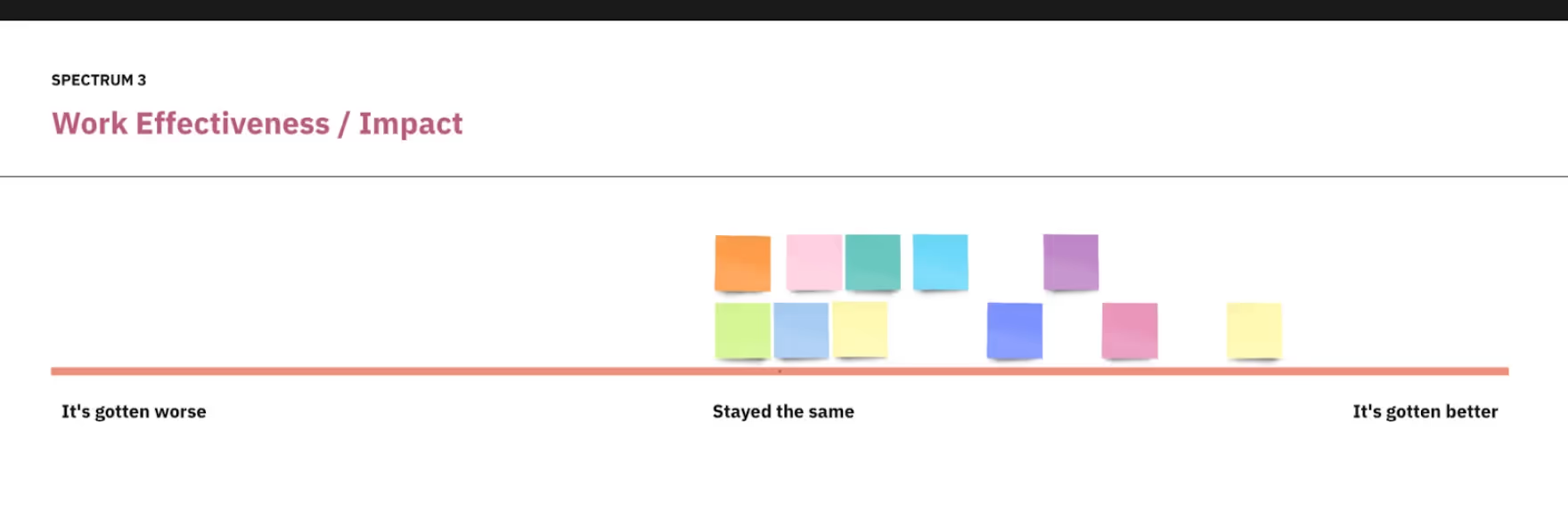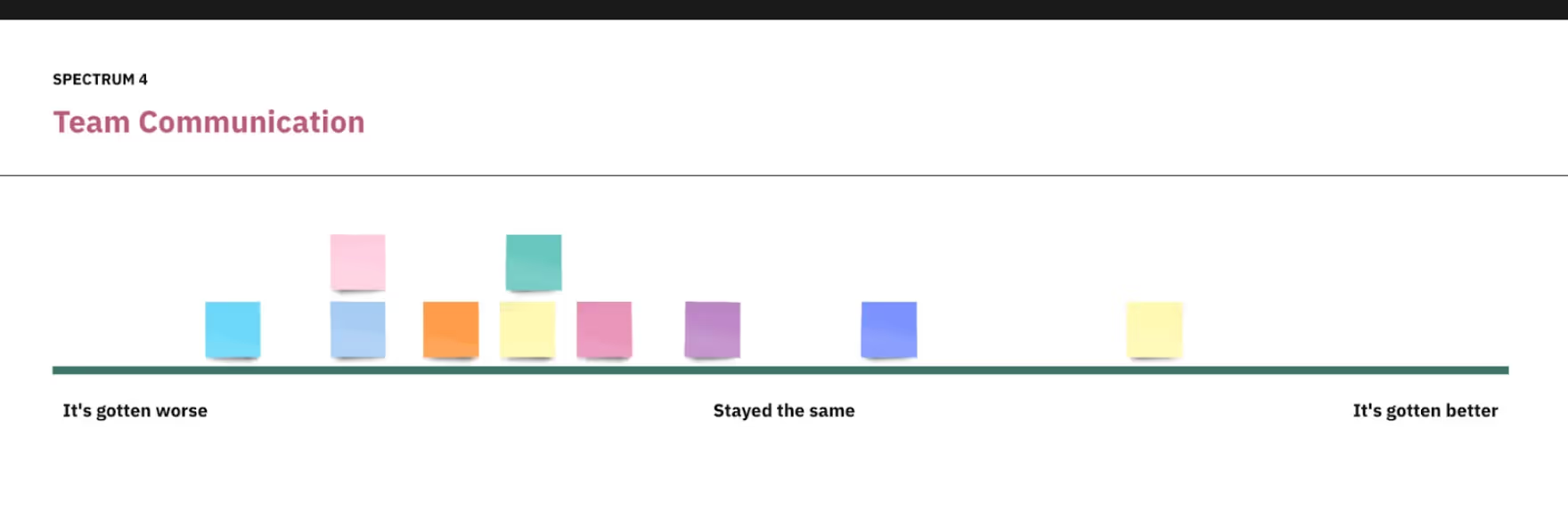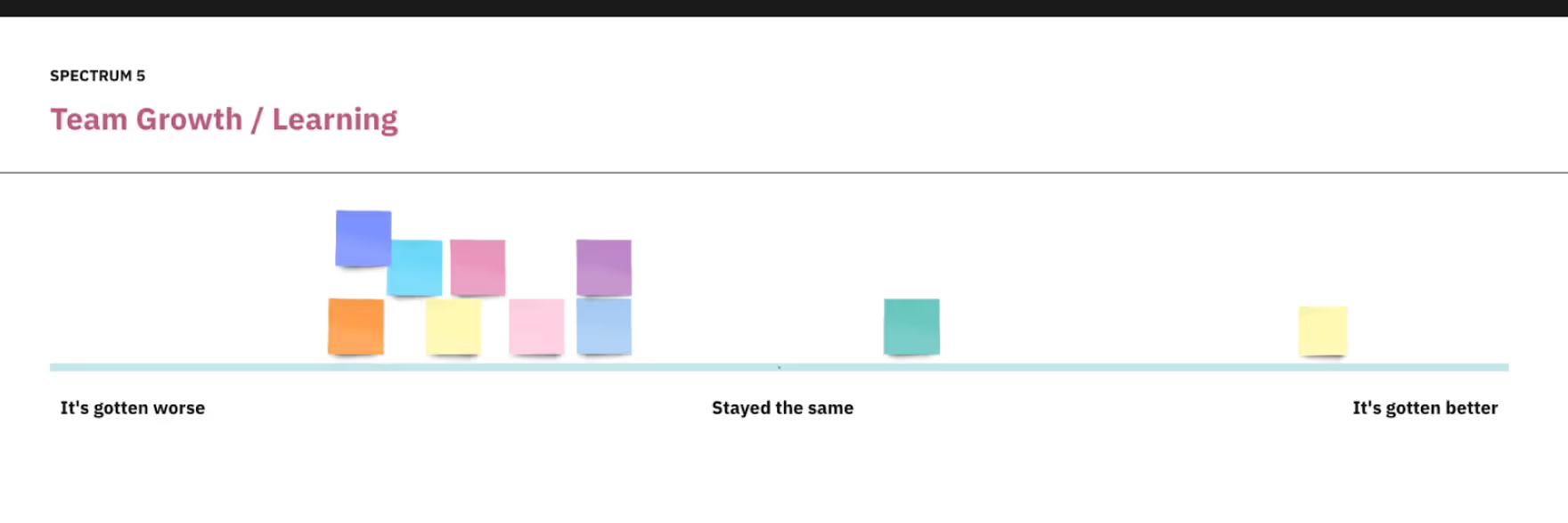Fully remote work became the norm for design and innovation teams at the start of the pandemic in March 2020. Nearly three years later, most teams remain fully or primarily remote.
We’re past the crisis of the rapid switch and the novelty of figuring out a new normal. Now we can begin to look at the impact with a longer-term perspective.
Before the rapid change to remote, a large amount of design and innovation work was assumed to be in-person work. Contextual research, ideation, new concepts, sketching, feedback sessions, paper prototyping, and anything using the ubiquitous Sticky Note were together-in-a-room activities.
Should we lament the loss of an in-person context? Is there a shared perception of lower quality or a strong desire to return to how things were before?
We gathered a dozen leaders of design and innovation teams working in large corporations and enterprises. We asked them these and other questions to assess what has improved, gotten worse, or stayed the same in their work, their teams, and their level of impact in their organizations.
The consensus among these leaders is that much of the work output is as good--if not better--in a fully remote environment, and there is limited desire to push for more in-person work.
On the other hand, there is concern about the challenges remote work creates for team communication and development. In these areas, leaders are exerting more effort for worse results.
We asked leaders to map their perceptions on a series of spectrums and then discuss the nuance of each topic. Each colored square represents a leader in the spectrums below.
Where are teams working now?
We started by asking how teams work today.

Most teams are operating in a flexible, hybrid environment. Only one organization has limited but standard in-person rhythms re-established. Everyone else is primarily remote, either because team members are distributed across different states and countries, or because they have acclimated to working primarily from home.
Has the quality of work outputs changed?
We broke the assessment of work quality into research, strategy, and design to see if the perception of work outcomes and deliverable quality had improved, degraded, or stayed the same across different categories of work.

There is a lot nuance here, as some things have improved while others have degraded.
In Research, shifting to a remote environment made conducting research massively more efficient and accessible. Scheduling, conducting, and recording qualitative research is much simpler virtually. The pandemic also made it easier for teams to get permission to use online research tools and platforms.
Many leaders believe this increased efficiency is accompanied by a decrease in the quality of the synthesis and insights following from the research itself.
This theme will reappear throughout these perspectives: a substantial minority of leaders believe the quality of a select set of strategic, collaborative design activities and outputs--like synthesis and insight generation--is meaningfully worse in fully remote environments.
In Strategy, the general perception is that the work quality has remained largely the same. Working remotely has made it easier to include people by lowering the barrier to entry. Working remotely has also pushed facilitators to create more efficient frameworks for use in virtual whiteboards and in virtual environments. These positives come at the cost of constantly fighting against lower energy and lower engagement in virtual environments.
Design has been, by consensus, the most positively impacted among the three segments by the change to remote. A decent amount of design work is heads-down work, which is well-suited to remote.
For the more strategic aspects of design, there were varied opinions on outputs and group dynamics in remote. While some lamented the loss of the energy and engagement of in-person design thinking activities, others challenged that these environments favored certain personalities and working styles and weren’t objectively better than virtual environments where different personalities and working styles may engage more productively.
Many leaders voiced concern that something has been lost around the cross-pollination of ideas, which happened serendipitously based on in-person proximity. No one has been able to create an adequate replacement for this cross-pollination in a remote environment.
How has your ability to impact the the organization changed?

Moving beyond outcomes, we were curious how working remotely is affecting how design and innovation is making an impact within the larger organization.
The general assessment here is largely positive, driven by two changes. First, the shift to remote work has increased access to leaders and teams throughout the organization by eliminating the time commitment and cost to travel to in-person meetings. Second, leaders and teams across organizations are increasingly adept at using virtual tools and platforms, making it easier to involve other teams and leaders in collaboration and sharing of the work.
How has team communication changed?

Team communication is where we started to see more negative perceptions.
Leaders lament the loss of team social and connection time. Functional and transactional communication is just as good, if not better, remotely, but the relational and belonging aspects of being on a team have suffered. Most leaders feel a burden to provide opportunities for more relational communication and connection. However, doing so in a remote environment takes intense work and planning for something that used to happen with little effort. Despite the extra effort and intentionality, leaders feel team connection and belonging is still worse in a remote environment.
The most negative experiences came from leaders of hybrid teams where expectations for technology use are not sufficiently clear, creating “worst of both worlds” meeting and communication patterns across partially remote and partially in-person teams.
On the positive side, the widespread adoption of chat platforms during the pandemic finally created a viable alternative to meetings and emails in more traditional organizations.
How has team growth and learning changed?

Like communication, leaders feel team growth and learning have progressively worsened during the shift to remote work. All leaders believe it is more difficult to engage the team in growth and learning when remote. In particular, evaluating and developing soft skills is very challenging. Leaders also wrestle with feeling more individual responsibility for team growth and development with the loss of shared time, cross-pollination, and mentoring among team members.
On the positive side, leaders value how much easier connecting team members to high-quality learning content online is. The pandemic created a new normal for greatly increased remote access to premier conferences and training.
While soft skills appear harder to teach and learn remotely, the group wondered if the perceived gap in soft skills will matter as much as we might think. Is there a different set of soft skills needed to operate in this remote environment, with in-person soft skills increasingly less relevant? Will young professionals navigate these remote soft skills just fine?
Conclusion
There’s a lot to absorb here, as leaders, teams, and organizations continue to learn and adjust. But one big takeaway is that leaders of design and innovation believe many things are better in this remote environment.
There are key concerns related to specific kinds of creative, collaborative work sessions, and particularly around team care, communication, and development.
The opportunity for leaders is to hone in on these specific concerns and experiment with team rhythms and work patterns that address these new challenges while embracing and amplifying the benefits of working remotely.
This conversation occurred in a gathering of the Design & Innovation Roundtable, a peer learning and sharing community for Director and VP-level leaders in large organizations. Learn more.



